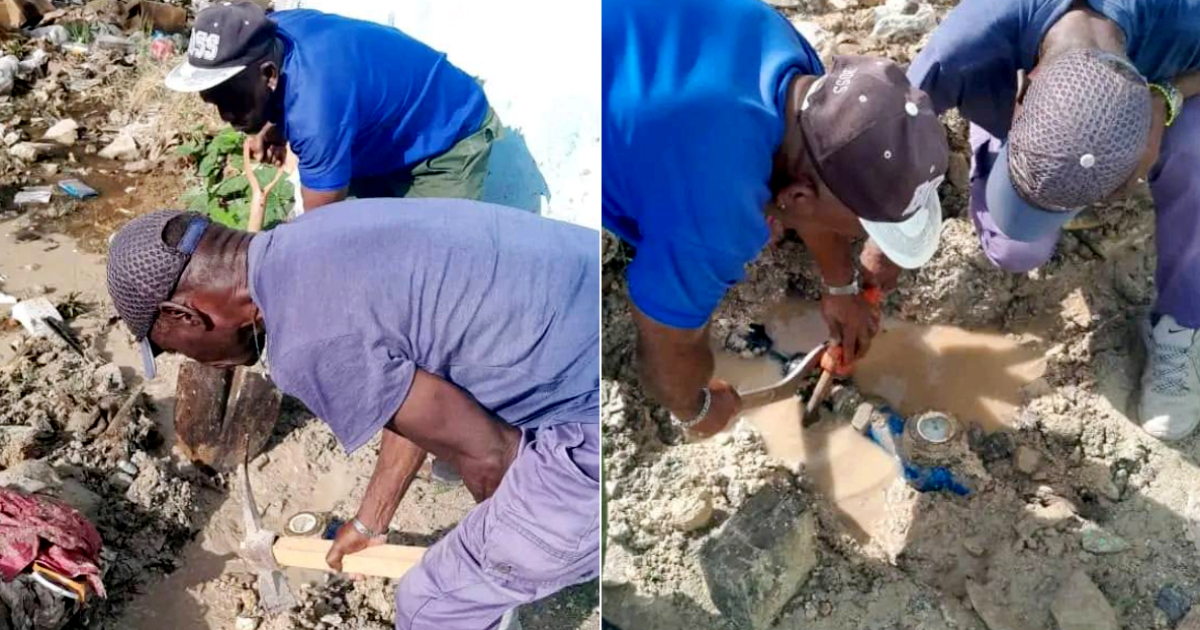
The company Aguas de La Habana reported that the capital continues to have water supply problems following the breakdown that destroyed the main pipeline, which they attributed to a blackout that occurred on Sunday evening.
This Tuesday, the state-owned company issued an informational note detailing the work done to resolve the breakdown and the Havana municipalities that are still affected by it.
"The company Aguas de la Habana informs users residing in the center and south of the city that, last night, the service of the Cuenca Sur supply fountain has been restored, after the crew from the Grandes Conductoras base worked in record time to fix the three breakdowns in the well field," the entity indicated on Facebook.
However, the company acknowledged that "the system begins the restoration with a significant deficit in pumping equipment, which delays the supply source from balancing."
In a style worthy of the informative notes from the Unión Eléctrica (UNE), which leave readers dizzy with figures and obscure explanations, Aguas de La Habana detailed the problems that left five wells with their pumping equipment broken.
The style manual of confusion has proven to be a success in leaving the victims of the collapse of basic services (such as electricity supply and water supply) in a paralyzing morass of data.
Here is an example: according to Aguas de La Habana, on Monday it was "appropriate to empower" the municipalities of Centro Habana and Habana Vieja. "However, despite receiving service last night [on Monday], it was not as effective as expected due to the situation of the broken equipment."
"Today [Tuesday] it is service day again, but it coincides with the pumping of Diez Octubre, which is on a third day and consumption is higher." Did anyone understand? Was the volume of water supplied clear? Was the volume of drinking water consumed daily by the mentioned municipalities stated?
But the impacts also extend to the Plaza municipality, where, according to the state-owned company, "service recovery began today [Tuesday] at 4:00 a.m., but due to the existing deficit of pumping equipment, the service disruption continues in the high points of each circuit." Again, what are those high points of each circuit, and how many users are located in them?
Finally, the Cerro municipality also reports incidents in the water service. The explanation in this case is even more convoluted.
"The recovery of the service began today [Tuesday] at 10:00 AM, but due to the insufficient number of pumping units, the disruption to the service continues in the higher points of each circuit. Daily service is provided and the major incidents are concentrated in areas that receive water by gravity, which are monitored in each shift."
Well, that. A blackout caused a burst in three points of a pipeline, leaving half of Havana without water... and the people responsible for Aguas de La Habana without excuses or shame.
At the end of June, Cuban authorities sent a water truck guarded by the police to a neighborhood in Old Havana where the population took to the streets to protest after more than 10 days without access to water.
Several hours after the protest, the Municipal Administration Council of the territory reported that the problem had been resolved with a tanker they sent to the location.
What do you think?
COMMENTFiled under: